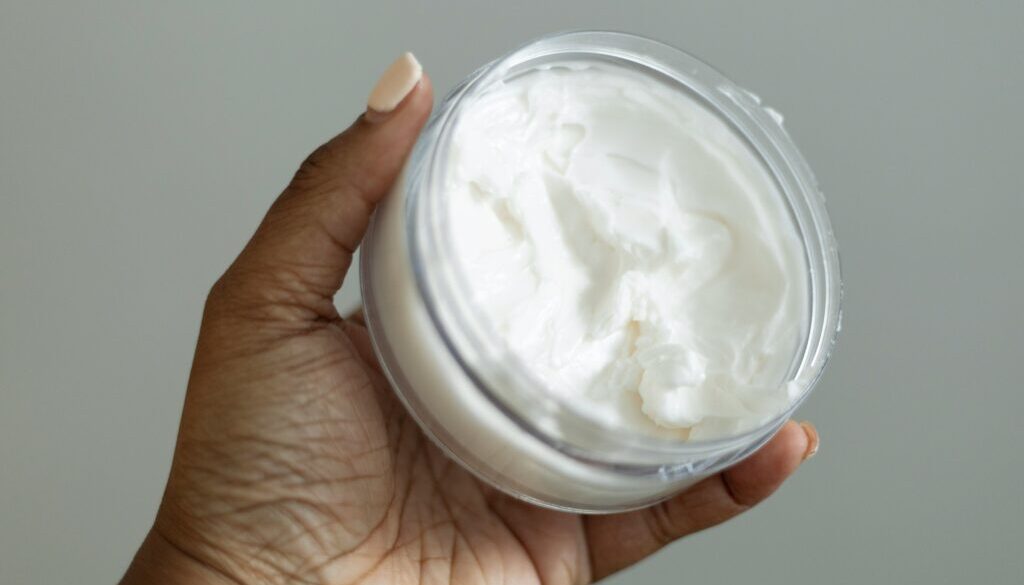Formaldehyde lurks in lotions, other products popular with Black and Latina women
A main ingredient in embalming fluid may be hiding in your body lotion.
In an analysis of more than 1,100 products used over the course of a week by 70 Black and Latina women in South Los Angeles, over half reported using products that researchers found contained formaldehyde or preservatives that release the toxic chemical.
The study, published May 7 in the journal Environmental Science & Technology Letters, found that only one product explicitly listed formaldehyde on its label – an eyelash glue. All other products that exposed participants to the chemical contained it in the form of “formaldehyde-releasing preservatives,” which slowly leach formaldehyde to extend a product’s shelf life.
Formaldehyde has been linked to cancer, respiratory problems and other health problems, and is widely used in chemical hair straightening products marketed to Black women.
“It’s really hard for consumers to respond to this because they aren’t seeing formaldehyde on the label,” said Robin Dodson, the associate director of research operations at the Silent Spring Institute and an author of the study.
“I’m not surprised that the hair products and some of the cosmetics had formaldehyde releasers in them,” she added. “I think what was really surprising was some of the body lotions and the soaps, the stuff you use every day. Some of the participants are using these products multiple times a day… [lotion] stays there until you wash it off so it could be 24 hours or more. It’s a lot of opportunity for you to be exposed to those chemicals in that product.”
While previous research has looked at the prevalence of formaldehyde and formaldehyde-releasing preservatives in consumer products on store shelves, the new study, which is based on data collected in 2021, is novel in looking at consumer products actually being used by women in their homes, said Dodson.
Studies in rats have linked formaldehyde exposure to cancers in the nose and to leukemia, and several studies have found that embalmers, who regularly work with formaldehyde, are at increased risk for leukemia, according to the American Cancer Society. Formaldehyde has been classified as “carcinogenic to humans” by an international cancer research group since 2004 and is listed as “known to be a human carcinogen” by the US National Toxicology Program.
In a recent analysis of more than 4,000 total personal care products marketed to Black women by the nonprofit the Environmental Working Group, researchers found at least one formaldehyde-releasing preservative in over a quarter of the hair relaxer products they analyzed.
A 2022 study in the Journal of the National Cancer Institute that followed almost 34,000 women over an average of nearly 11 years found a link between using hair straightening or relaxer products and uterine cancer – products disproportionately used by Black women.
In a 2019 study published in the journal Dermatitis, scientists found that 4 of the 46 personal care products they tested that did not indicate formaldehyde or formaldehyde-releasing preservatives on their labels actually did release small amounts of the chemical, suggesting it may sometimes be present even it isn’t listed in the ingredients at all.
A 2023 study concluded that personal care products that contain preservatives that release formaldehyde present a “negligible” cancer risk to consumers.
“While the presence of formaldehyde and [formaldehyde-releasing preservatives] in these products is concerning, their mere prevalence does not demonstrate that users are exposed to unacceptable health risks,” said Kan Shao, a professor in the Department of Environmental and Occupational Health at the Indiana University School of Public Health and an author of the 2023 study. “Regulatory agencies should adopt a risk-based approach to decision-making in order to effectively manage exposure and safeguard public health.”
The European Union in July 2024 began requiring new products entering the market that contain formaldehyde-releasing preservatives to carry labels warning that the products release formaldehyde, although companies that already had such products available in EU markets were given until July 2026 to comply.
But in the US, no such federal labeling requirement exists. While the US Food and Drug Administration (FDA) was set to decide by April 2024 on proposal to ban formaldehyde in hair straightening products, the agency kept pushing back the date. After President Trump took office, the proposal was paused along with other pending federal regulations.
“We were hopeful [the FDA] would actually try to push forward a rule in the last year but they haven’t,” said Dodson. “The regulatory action is actually all happening at the state level.”
The authors hope that their data will help support policies under consideration across the country, she said.
Six states have already adopted policies to ban or restrict formaldehyde in products, while eight have introduced such policies, often as part of bills that designed to protect consumers from other toxic chemicals as well.
In January, the so-called “Beauty Justice Act” was introduced in the New York state senate, which would restrict formaldehyde and formaldehyde-releasing preservatives along with heavy metals and other chemicals of concern from personal care products and cosmetics sold in the state. Similarly, Washington state in February proposed a rule that would ban intentionally added formaldehyde-releasing preservatives in cosmetics and other products.
(Featured image by Leighann Blackwood on Unsplash.)




